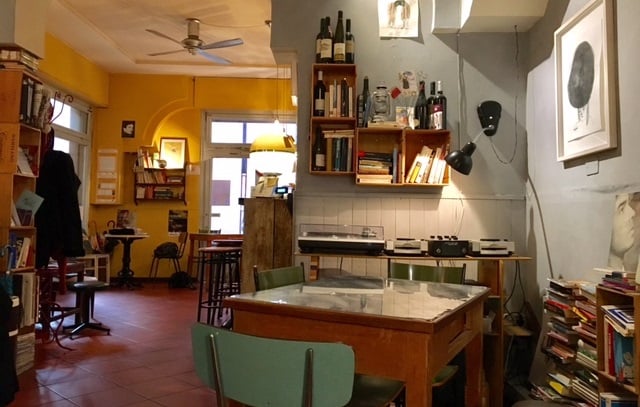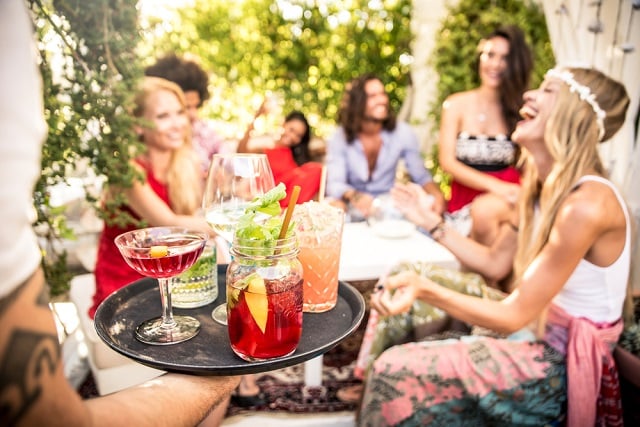Finding a cafe to study in can be trickier than you might expect, due both to unreliable wi-fi and the fact that in Italy, it's more usual to knock back an espresso or macchiato while standing at the bar than to sip it slowly over the course of an afternoon.
But once you know where to look, there are several great options for students or freelancers to spend an afternoon with a coffee and your laptop. Here are seven of our top picks across Bologna, all of which offer free wi-fi.
- Up to 300 Starbucks stores are coming to Italy
- Why coffee in Italy is a culture you must taste to understand
- Italy's late coffee king buried inside iconic Moka pot
Zoo
Zoo is a particularly good choice if you’re after creative inspiration – as well as serving up tasty bagels, pastries and coffee (plus Sunday brunches!), the cafe acts as a gallery and bookshop. All food and drink is organic and if you’re planning on spending the day, for just €1 you can have unlimited refills on coffee or green tea.
Address: Strada Maggiore, 50
Cafe de la Paix
Run by a social enterprise, Cafe de la Paix was Bologna's first fairtrade cafe, and all its products are fairtrade and/or organic. It's open from early until late so you can have breakfast, lunch or aperitivo there – or sit with a book or your laptop and a cup of coffee in between, or choose from the wide tea selection. There's also a book crossing in case you're looking for reading inspiration.
Address: Via Collegio di Spagna 5b
Fram
Another eco-friendly option is Fram, which offers fresh and healthy food with plenty of light and veggie options, should the day ever come when you find yourself saying ‘not another bowl of pasta’.
The cool vintage aesthetic makes it a cosy nook for studying, with a long central table that’s reserved for those working on laptops. However, it is one of the more expensive eateries in the student city.
Address: Via Rialto 22
Caffe Terzi
Terzi is one of the most famous traditional cafes in the city, so most locals drink their espresso standing at the bar. But there's also comfy seating and wifi for those who prefer to linger over a drink.
There are different types of coffee beans from around the world as well as a variety of milks, sugars and sweeteners – and you'll get the option to top your coffee with rich chocolate shavings. Terzi serves tasty croissants and biscotti, but unlike others on the list it's not a place to have a full meal.
Address: Via Guglielmo Oberdan 10
READ ALSO: Why Bologna should be the next place you visit in Italy
ItIt
One of the few places in town where you can get a big takeaway cup of coffee, ItIt is also worth a longer stay to take full advantage of the free WiFi and fresh foods.
Nestled in the heart of the university district, students are the target audience here, and fans of chains like Starbucks will feel at home – they even write your name on the cup. Itit serves drinks which can be hard to find at more traditional Italian cafes, including chai lattes and special coffee blends, topped with whipped cream and syrups if that's what you want. And the food ranges from sandwiches to falafel, as well as pastries, cupcakes, and delicious muffins.
Address: Largo Respighi 2
Camera a sud
Tucked in the Jewish quarter of the city you’ll find Camera a sud and its well-priced, delicious pastries and lunches. Settle down with a coffee, tea or a deliciously thick hot chocolate – or even something stronger if the occasion calls for it, as the cafe morphs into a wine bar later in the day, with over 200 varieties on offer.
Address: Via Valdonica 5, Bologna
Pappare
Just minutes from the central two towers, Pappare is heaven for pastry lovers (including vegans) – you'll be spoilt for choice. If you want something lighter, there's also a variety of healthy snacks including wraps and salad bowls to go with their great coffee.
Address: Via dei Giudei 2
READ NEXT: Five great spots for aperitivo on a budget in Milan





 Please whitelist us to continue reading.
Please whitelist us to continue reading.